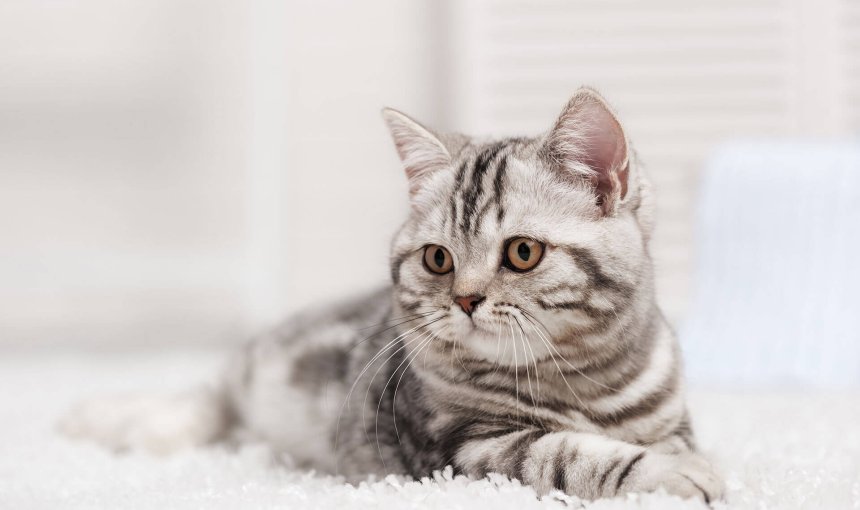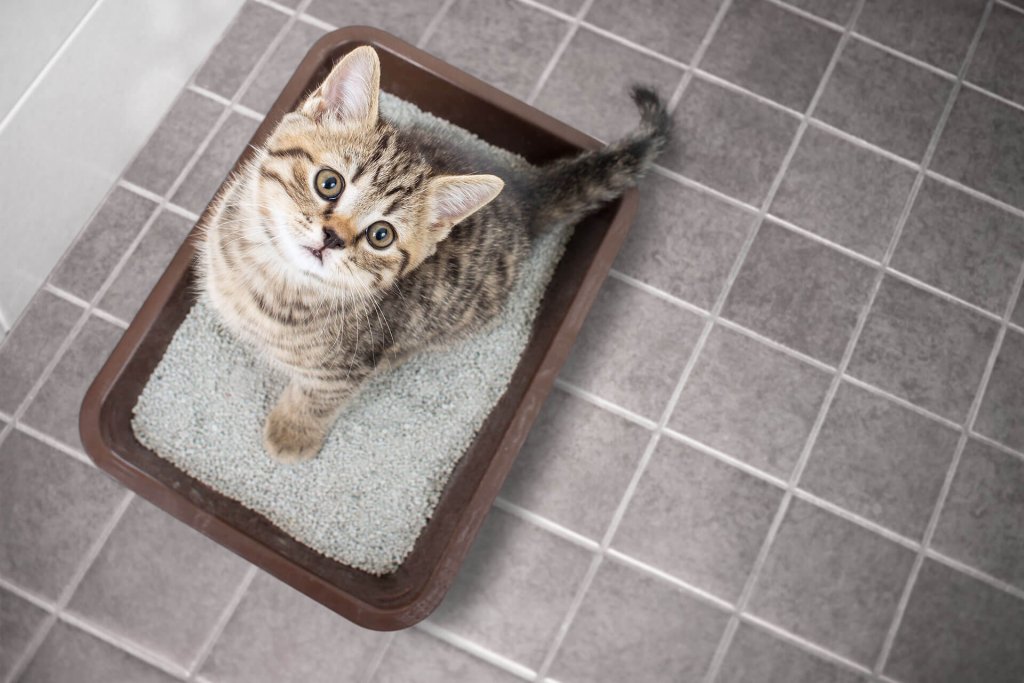Why Is My Cat Peeing Outside Of The Litter Box?
Is your cat having difficulty using the litter box these days? Find out why, and how to get your cat back to doing their business as usual.

If your cat suddenly starts peeing outside of the litter box and urinating all over the house, you might be wondering what’s causing this out-of-the-ordinary behavior. Here are 5 key reasons why, what steps you can take to get them to use the litter box again, and where an Activity Tracker for cats can help you figure out if it’s because they’re sick.

Find out where your cat spends their time.
Read more5 reasons for a cat peeing outside the litter box
It’s not uncommon for cats to go through a phase in their life when they no longer use the litter box and instead prefer other spots around your home to do their business. So you might be wondering, why has your cat suddenly changed their behavior? And why are they no longer using the litter box as they did before? Here are some of the…
Less concerning reasons
- Territory
Did you just bring home a second cat? Well, that’s one reason why your cat is peeing in the apartment. Your feline friend wants to defend their territory against intruders. So they’re leaving their “mark” everywhere in the apartment…unfortunately, with their pee. Male cats might be more prone to this behavior. It’s how they show each other who’s boss and defend their boundaries.1 - Their litter box is too small – or dirty
So your cat does not feel comfortable there and is looking for other options. - Their litter box is in the wrong location
Cats – like humans – are not happy if there’s lots of action around them while doing their business.
Look for a nice and quiet corner in your home. For example, a quiet area in the living room, or better yet, your cat’s favorite spot. Do them a favor and put the litter box there!
Once you’ve ruled these out but your cat is still peeing outside of the litter box, you might need to consider the…
More concerning reasons
Which include:
- Medical issues
Like, for example, urinary tract infection. While cats are notoriously good at hiding illness, this painful condition can lead a cat to avoid the litter box, which they begin to associate with pain. So they might look for a new place to do their business or hold on until it’s no longer possible – and have an accident instead. - Stress
Cats are sensitive animals, and small things that seem trivial might throw off their emotional balance. Peeing outside of the litter box is a common reaction in such cases. Stress triggers can also be changes in the living environment, for example, moving somewhere new with your cat. Cats are also prone to separation anxiety and this might lead to them peeing outside of the box.
Remember: your cat isn’t doing this out of nowhere to be a nuisance or because they think it’s funny!
How to get a cat to use the litter box again
First of all – take a deep breath. You’re definitely not alone, and the good news is: most cats can be retrained to use their box. It just takes a little detective work, patience, and a few adjustments to their environment.
Start with a clean slate
Cats are super picky about cleanliness. Even the tiniest whiff of leftover pee or poop might send them looking for a “better” place to go. So, scrub the litter box with unscented soap, rinse well, and make sure it’s completely dry before adding fresh litter. At the same time, thoroughly clean any spots where your cat has peed outside the box. Use an enzymatic cleaner to get rid of the odor completely (they’ll keep going back if they can still smell it).
Also, avoid perfumed cat litter, scents and deodorants. The smell might put off your cat and they might end up looking for a less offensive pee spot elsewhere. Be sure to clean the litter box regularly, 1-2 times per day if possible. Else, consider getting a self-cleaning litter box to save some time.
Check the litter box setup
Cats can be surprisingly opinionated about their litter box. Covered or uncovered? Clumping or non-clumping litter? Too high-sided? Too close to their food? Try experimenting with different setup. Sometimes just moving the box to a quieter, more private location does the trick.
Offer your cat some options
If you’ve only got one litter box, consider adding another. The general rule is: one box per cat, plus one extra. Some cats like to pee in one and poop in another (divas, right?) So having multiple options helps reduce stress.
Make the litter box the best bathroom ever
Encourage your cat to use the litter box again by keeping it clean, quiet, and easy to access. And if your cat does use it – even once – offer praise, a treat, or a bit of playtime as a reward. Positive reinforcement goes a long way.
Drop by your vet for a checkup
If nothing’s working, your cat might be trying to tell you something. Urinary tract issues, pain, or even emotional stress (like a new pet, a house move, or changes in routine) can lead to litter box avoidance. A quick vet check can help you rule out any underlying health problems.
Where an Activity Tracker for cats can step in
Sometimes, the signs that your cat is sick can be super subtle. A drop in activity, fewer zoomies, more naps than usual – they’re easy to miss, especially if you’re not home all day. That’s where an Activity Tracker for cats can lend a hand.
Strapped to your cat’s collar, your trusty Tractive GPS & Health Tracker helps you:
- Stay on top of your cat’s activity
With its built-in motion detector, your tracker logs in your cat’s active minutes all day – how much they move, rest, and play – compared to their usual patterns and even to similar cats. - Spot a change in your cat’s activity earlier on
Which could be a red flag, signalling they’re sick, injured, or trying to tough out the pain. - Take action with a Health Alert
If your cat’s activity suddenly drops or they become unusually restless, the tracker will send you a Health Alert. That way, you can catch issues like urinary tract infections or pain early, before they develop into something more serious.

- Monitor your cat’s sleep
The tracker also lets you keep tabs on your cat’s sleep patterns, helping you understand if they’re sleeping more than usual (a potential red flag) or if they’re not getting enough rest. It’s all about spotting changes that could indicate illness or stress – two major reasons why cats start avoiding the litter box in the first place. - Have a more productive conversation with your vet
You’ll be able to share data on your cat’s recent behavior, activity, and sleep trends – no more guessing or relying on memory. It makes check-ups way more productive and gives your vet a fuller picture of your cat’s health.
In short: the Tractive GPS & Health Tracker is like a wellness assistant for your cat. It gives you peace of mind, helps you act fast when something’s wrong, and makes sure your furry friend is living their healthiest, happiest life – hopefully with all business back in the litter box where it belongs!
Ready for a pee-free indoor space?
Remember: a cat peeing outside of the litter box is not unusual. So there’s no need to panic. However, if this happens more often, or if your cat does not normally do this, it’s important to get to the the root cause of this behavior. Getting back on track takes time, but with a bit of trial and error (and lots of love), your cat will likely find their way back to the box.
⚠️ Don’t underestimate any pee trouble when your cat is concerned. It may just be that your cat is ill and needs medical treatment.

Get health alerts for your cat
Our cats can’t always tell us if something’s wrong. But if their tracker detects unusual changes in their routine, you’ll get an alert, helping you catch potential issues early.
And if you’ve liked this post, share it with a friend or a loved one – and let’s help build a safer, kinder world for our furry friends together.




